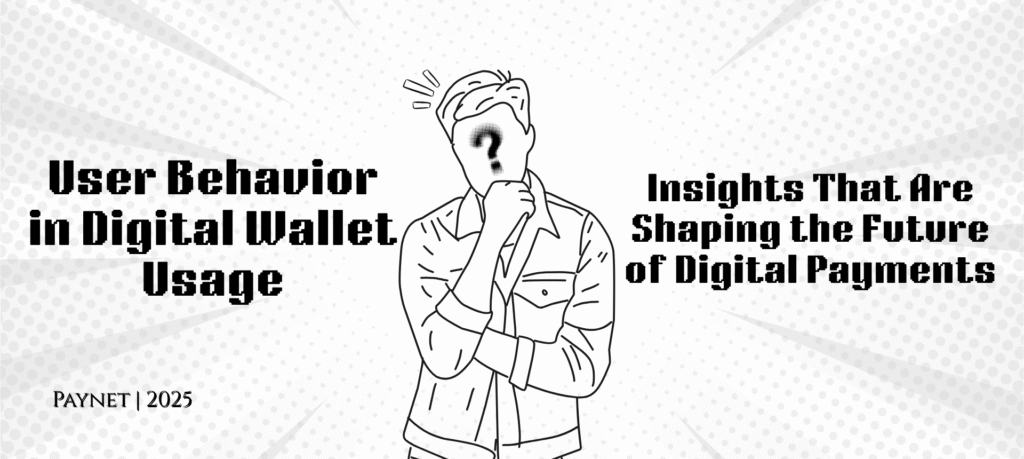User Behavior in Digital Wallet Usage: Insights That Are Shaping the Future of Digital Payments – [Cloned #1447]
Home UPI Growth and Adoption Insights: How India’s Favorite Payment System Is Shaping the Future of Finance Explore UPI growth...

Explore changing user behavior in digital wallet usage—what drives adoption, preferences, spending patterns, and how businesses can benefit from these insights.
From paying for international streaming services using a QR code at a roadside tea stall to buying street food from a vendor, digital wallets have become an everyday routine for millions.
But what makes consumers use digital wallets every day? What keeps them active—and what drives them to switch?
In this blog, we go deep into consumer behavior in digital wallet adoption, and what it holds for businesses, developers, and fintech marketers in 2025 and beyond.
A digital wallet (or e-wallet) is an app-based mobile application that enables one to store, send, and receive money electronically. Some examples are:
They hold card information, UPI IDs, loyalty points, and even cryptocurrencies in a few instances.
But how and why people use them is where the story unfolds.
What We’re Seeing:
Users prefer quick, contactless transactions—especially in post-pandemic times.
Over 80% of urban users choose UPI or wallet payments over cash
QR code scanning is the #1 action for repeat wallet users
Bill splitting, recharges, and grocery payments dominate casual usage
Key Takeaway:
Speed and ease of use are top drivers. Apps that reduce steps in the payment flow see higher retention.
Insight: One-tap payment-enabled wallets or widget-based payments show improved user activity.
Yet how individuals make use of them, and the reason why, is where things get fascinating.
What Keeps Users on a Wallet?
Personalized cashback rewards
Reward points redeemable in wallet cash
Gamified saving (e.g., scratch cards by Paytm, rewards by Google Pay)
Most users change wallets because of offers or payment caps.
Behavior Patterns:
Wallet loyalty is at its peak when offers are recurring, not merely one-time
Cashback on unavoidable bills (electricity, water) promotes repeat usage
Referral rewards still work, especially among tier-2 cities
Companies may collaborate with wallets to execute targeted advertising and acquire user loyalty.
Age Groups:
18–35 yrs: Most active group—used for recharges, shopping, and food delivery
35–50 yrs: Growing fast in adoption—focus on utility payments, subscriptions
50+ yrs: Prefer voice or guided UPI but usage rising with simplified UI
Gender Split:
Male users dominate in early adoption
Female users show stronger retention when wallets are linked with eCommerce or shopping apps
Region-Based Behavior:
Urban: High frequency, multiple wallets used
Rural: Preference for wallets with vernacular language support and offline UPI Lite features
📊 Fact: In 2024, tier-2 and tier-3 cities contributed to 42% of wallet transactions.
Top features that influence user behavior in digital wallet usage:
✅ Fast payments (UPI > Card > Netbanking)
✅ Wallet balance display & auto top-up
✅ Bill reminders
✅ Subscription auto-pay
✅ Split bill or request money
✅ Spending insights or monthly expense summary
💡 Insight: The more features a wallet includes in the daily habit loop, the more likely users are to return.
What Keeps Users on a Wallet?
Personalized cashback rewards
Reward points redeemable in wallet cash
Gamified saving (e.g., scratch cards by Paytm, rewards by Google Pay)
Most users change wallets because of offers or payment caps.
Behavior Patterns:
Wallet loyalty is at its peak when offers are recurring, not merely one-time
Cashback on unavoidable bills (electricity, water) promotes repeat usage
Referral rewards still work, especially among tier-2 cities
Companies may collaborate with wallets to execute targeted advertising and acquire user loyalty.
Even minor UI tweaks can influence users‘ behavior within an app.
What Users Want:
Basic, clean interface
Low-friction onboarding (sign-up + KYC)
Regional language support
Accessibility for visually or hearing impaired users
A well-designed wallet app can decrease drop-offs by more than 30% at payment time.
Common Use Cases:
Mobile/DTH recharges
Utility bill payments
eCommerce and food delivery
Subscription renewals (OTT, apps)
Local store purchases (via QR)
Emerging Use Cases:
Investing in mutual funds via wallets
Credit-based purchases (Buy Now Pay Later)
Donations & crowdfunding
Peer-to-peer lending
📈 Many users treat wallets as daily spending tools while using banks for savings/investments.
Understanding user behavior in digital wallet usage is key for building better apps, offering smarter rewards, and creating frictionless financial experiences.
For businesses, integrating with the right wallet or payment solution can unlock new markets, increase conversions, and boost customer loyalty.
👉 Want to tap into the growing digital wallet user base? Explore Paynet’s Wallet Integration & Smart Analytics Tools
Home UPI Growth and Adoption Insights: How India’s Favorite Payment System Is Shaping the Future of Finance Explore UPI growth...
Home User Behavior in Digital Wallet Usage: Insights That Are Shaping the Future of Digital Payments Explore changing user behavior...
Home New Features in UPI and Mobile Wallets 2025: Smarter, Safer & More Seamless Than Ever Explore the latest features...